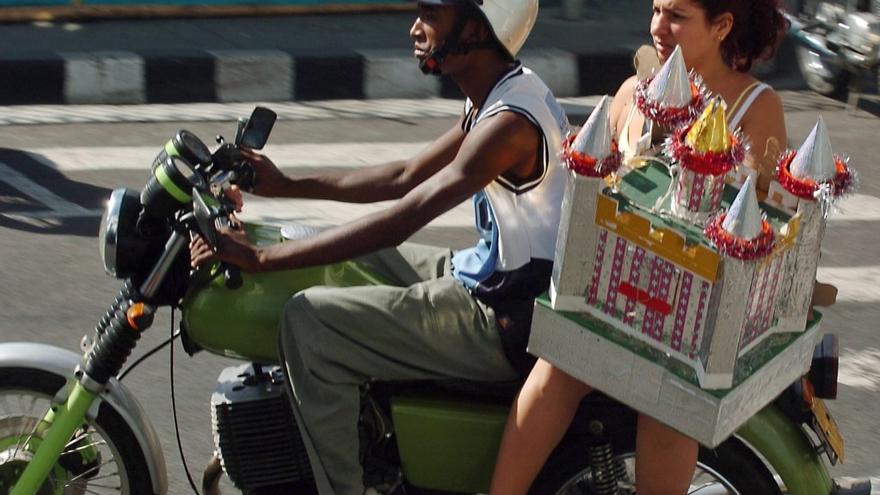
![]() 14ymedio, Alberto Hernández, Santiago de Cuba, 17 June 2021 — “”Based on the concerns voiced by the population,” the Temporary Working Group to confront Covid in Santiago de Cuba, lifted the ban on motorcyclists carrying passengers, two days after its June 11th announcement. The new rules, intended to help alleviate the demands on the city’s public transport system, allow licensed motorcyclists to ferry riders from 5 am to 8 am, and from 4 pm to 7 pm.
14ymedio, Alberto Hernández, Santiago de Cuba, 17 June 2021 — “”Based on the concerns voiced by the population,” the Temporary Working Group to confront Covid in Santiago de Cuba, lifted the ban on motorcyclists carrying passengers, two days after its June 11th announcement. The new rules, intended to help alleviate the demands on the city’s public transport system, allow licensed motorcyclists to ferry riders from 5 am to 8 am, and from 4 pm to 7 pm.
Augusto, who makes his living carrying passengers, is one of those who mobilized to overturn the ban. “What they don’t realize when they adopt these measures is that a motorcycle supports two families: the driver’s and the owner’s. If they don’t allow us to work, how are we supposed to eat?”
Cesar, one of his colleagues, adds, “Even when we’re not working, we still have to pay the license fee and the social security tax.”
After receiving complaints from unlicensed motorcyclists, who were not included in the lifting of the ban, city officials later amended the regulations to include them. “In my case, and there are a lot of people like me, I wasn’t even allowed to take my wife to work on my motorina. She had to get up before dawn to take public transit and walk almost an hour,” says Mario Alvarez.
Santiago de Cuba has more motorcycles than any other city on the island, almost 10,000 registered vehicles. Of them, more than 1,900 are commercially licensed or have licenses pending approval according to figures published by Juventud Rebelde. When motorcycles operating illegal are included in the count, the figure rises to 14,000, as confirmed by an official provincial news media outlet, CMKC.
A 23-year-old motorcyclist who drives one of the city’s most popular models — an Mz 251, made in former communist East Germany — tells 14ymedio how he manages to work during times of the day when motorcyclists are not allowed to operate. “When I go to work, I risk getting caught. I charge more during the prohibited hours. If a ride normally costs 30 pesos, I charge 50. I am not willing to starve to death. It’s very hard.”
Dalia, who is in the same line of work but rents her motorcycle from its driver, points out inconsistencies in the public health arguments that officials used to ban commercial use of two-wheeled vehicles: “I don’t understand why they are singling out motorcycles when buses and trucks are full of people while motorcycles only carry one passenger.”
____________
COLLABORATE WITH OUR WORK: The 14ymedio team is committed to practicing serious journalism that reflects Cuba’s reality in all its depth. Thank you for joining us on this long journey. We invite you to continue supporting us by becoming a member of 14ymedio now. Together we can continue transforming journalism in Cuba.
